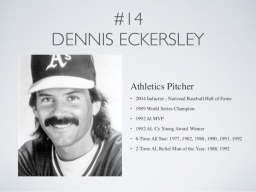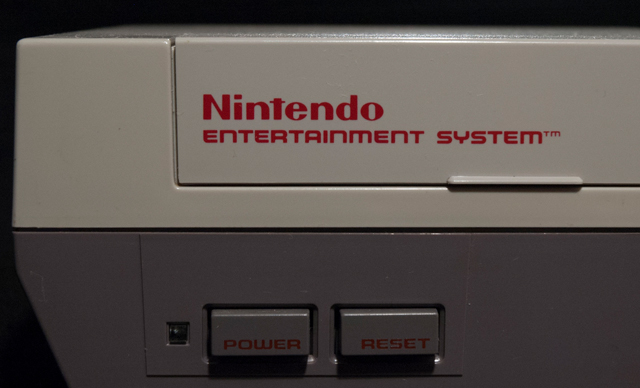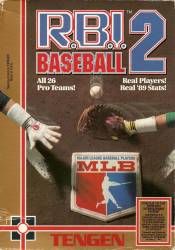The NES produced many a solid baseball game using every angle imaginable: Little Leaguers were featured, as well as baseball Legends, and even robots. Naturally, most games revolved around the MLB by licensing either the league or its players. One revered series to chose player licensing over league was R.B.I. Baseball. Developed by Namco and published by both Namco and Tengen 1986, the first installment of the series was a smash hit that has gained cult following, and honored with roms such as “NCAA Baseball.”
By the time the series’ second sequel was released in 1991, R.B.I. Baseball 3 had expanded its reach to include not only the players and “teams” from the 1990 season, but all division winning rosters from 1983 – 1990, in addition to the 1989 all-star teams. The 1985 National League East winning St. Louis Cardinals are curiously left out, which is too bad since it keeps the tally of playable teams from reaching an even 50 teams. The addicting pitch-and-catch gameplay is nearly identical in all three games. The graphics are cookie-cutter as well, with the sole difference being the players in R.B.I. 1 look like pudgy middle-schoolers in comparison. So with the cult classic status of the original and R.B.I 3 having stars from most of the 80s, how does R.B.I.’s middle-child beat out its siblings, not to mention make it so high on my list of top NES games? Glad you asked my friend.

The simple answer would have to be, “nostalgia.” My brothers and I must have rented R.B.I. Baseball 2 a dozen times before we wised up and invested in our own cartridge. Frequently my younger brother and I would square off in multi-player competition. He would choose the star-studded gents in forest green from “OK” (Oakland Athletics), and I would take the far boisterous boys in aqua blue from “KC” (Kansas City Royals). On occassion my dad would answer a challenge and pick up a controller. One magical day saw me beat my old man solely relying on one Rich Yett, a relief pitcher of the Cleveland Indians with a high ERA and the stamina of a toothbrush bristle.
But as fun as nostalgic sentiments are they can only take you so far. In the end, a classic video game is going to have to offer more than fond memories, and it’s my opinion that our game in question does just that. I keep coming back to R.B.I. Baseball 2 because of the fun and consistent pitch-and-catch structure at its core. Fielding is important, but not nearly as much as an ace pitcher or big-stick batter. In 1-player mode I always feel like the results are fair — if I get hits it’s because I was smart with my swings, and if I come up dry it’s because I wasn’t discerning enough. The intensity rises to a whole ‘nother level in multiplayer, however. Every battle between pitcher and batter is a chess match with potentially game-changing repercussions.
Although there is no differing of avatars, it is amazing the life breathed into the players with solely a name, position, and batting average / ERA to call them by. Games that have to make up player names just can’t compare. Despite there being no MLB licensing, R.B.I. 2 is still able to create the sense of league atmosphere. One of the most enjoyable aspects of season play is finding a niche for players that they never would enjoy in real life. Want Don Mattingly as your Yankees lead-off? Knock yourself out. Each team has a single jersey color that really pops, most commonly royal blue or maroon. One of the reasons I prefer R.B.I.’s first sequel to the original is that it is steeped in Tengen style. There are electrifying fireworks for every home-run and cheereladers pomming after every victory. The most notable Tengen-ism is the treat for playing and beating every team in your league: by playing the game developers themselves!
When it comes to mechanics, the AI in the R.B.I. series is a fun mix between robotoic and humane simulation. While it doesn’t always make the best choice, the COM is very consistent. You will never see a fielder dive for a ball like a human-controlled avatar, or make a quick tag before throwing out the batter at first. As the human in the equation, you will learn which ‘live ball’ sequences the COM will make a play on and which ones they will take all day to track down. There are ways to regularly fool the COM AI — such as being granted a free stolen 2nd base any time you have a runner on 3rd — but you will learn to distinguish between the tricks you can perform and still sleep at night and those that’ll weigh on your conscience.
Peanuts and crackerjacks, are you saying the game has programming flaws?! Of course there are some of those lying around. If I wanted to play a game that has air-tight AI and exact player likenesses, I would invest in the newest gen system — but that’s just not my style. I’d rather stick with a game with the basic construct to get me coming back for more for years. Pitch and catch. I wanna be taken to the ball-game, I want to hear the crowd. I wanna try and mow down Mark McGwire and Jose Canseco with my man, Brett Sabrehagen.
As an aside, I know it may be a discredit to some gamers that two of my top NES games are in the sports genre, but I gotta speak from my heart. There won’t be too many more sports games.
… Or will there?



